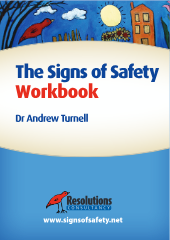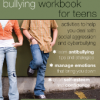What is ADHD?
This animated video, narrated by Molly, provides a child-friendly explanation of ADHD, aiming to educate and dispel misconceptions. It offers valuable insights into the condition for school children, supporting understanding and awareness. This resource serves as a helpful tool for learning about ADHD.
Explaining ADHD To Elementary School Kids – The Brochachos [ADHD Dude]
ADHD Dude uses the term “Brain Coach” to describe self-directed talk for kids with ADHD, crucial for guiding their actions. This video introduces the concept to children, helping them grasp how their brains work. Alongside the Brochachos video series, ADHD Dude offers parent training through their Membership Site, as well as in-person programs and camps, all aimed at supporting children with ADHD.
That’s Me, I Have ADHD!
This animated video, part of the “Me and My ADHD” series, offers a glimpse into the lives of characters Sam and Tommy, portrayed by Ketani Froats and Owen Dhargalkar respectively. Through their experiences, viewers gain insight into what it’s like to navigate life with ADHD. From personal challenges to school experiences, the video aims to foster understanding and empathy towards those with ADHD.
When My ADHD Gets Me Into Trouble
Why ADHD can sometimes make it difficult to do the right thing.
My ADHD at School
Understanding ADHD (for ages 2-6) – Jumo Health
Embark on Cameron’s journey as he delves into the workings of attention deficit hyperactivity disorder (ADHD) and its treatment methods. Follow along as he learns about the brain mechanisms behind ADHD and explores various approaches to managing the condition. Join Cameron on this educational adventure to gain a deeper understanding of ADHD and its treatment options.
Understanding ADHD (for ages 7-12) – Jumo Health
Accompany Vincent on his exploration of life with attention deficit hyperactivity disorder (ADHD). Follow his journey as he navigates the challenges and triumphs associated with ADHD. Join Vincent as he learns strategies for managing symptoms and embraces his unique experiences.
Neurodiversity for Children – Part 1 – Different Brains
This is the first video in a two-part series aimed at explaining neurodiversity to children. It highlights the uniqueness of every individual’s brain and demonstrates the various functions our brains perform. Through engaging visuals and simple explanations, children learn to appreciate and understand the diversity of brains.
Neurodiversity for Children – Part 2 – What is Neurodiversity?
This is the second video in a two-part series designed to educate children about neurodiversity. It builds upon the concepts introduced in the first video, further exploring how all brains are different and celebrating the diversity of neurological differences. Through clear and accessible explanations, children gain a deeper understanding of neurodiversity and the importance of embracing individual differences.
My ADHD Brain | Me & ADHD | Thriving with ADHD
“My ADHD Brain” gently introduces the concept of having an ADHD brain, raising awareness about the “upstairs part of the brain” (cerebral cortex) where executive functions reside, and the “downstairs part of the brain” (amygdala) where emotions are housed. It illustrates how these components interact, fostering understanding of ADHD’s impact on cognitive and emotional processes.
A Dragon with ADHD
“A Dragon with ADHD” by Steve Herman is a captivating tale that follows the adventures of a dragon navigating life with ADHD. Through colourful illustrations and engaging storytelling, the book offers an insightful look into the challenges and triumphs of living with ADHD. It provides a relatable and empowering narrative for children and families alike, promoting understanding and acceptance of neurodiversity.
My Brain is a Race Car by Nell Harris – Kids Book Read Aloud
“My Brain is a Race Car” by Nell is a children’s book designed to foster understanding and self-regulation for those with ADHD/Autism. Through simple language and engaging illustrations, it provides terminology tailored to young readers and encourages open conversations about individual approaches to managing these conditions. With free activities included, this book offers a supportive resource for children and families navigating neurodiversity.








